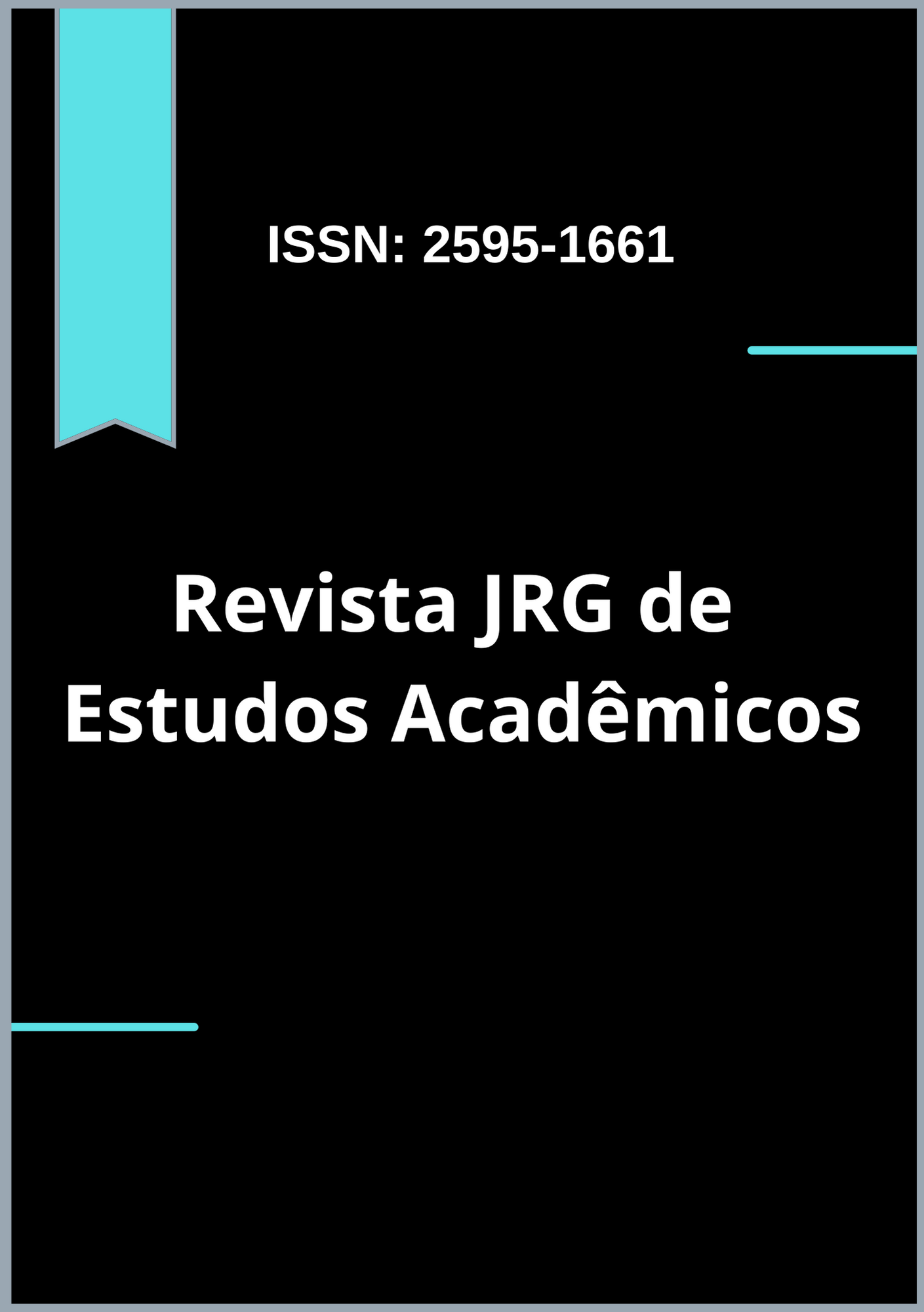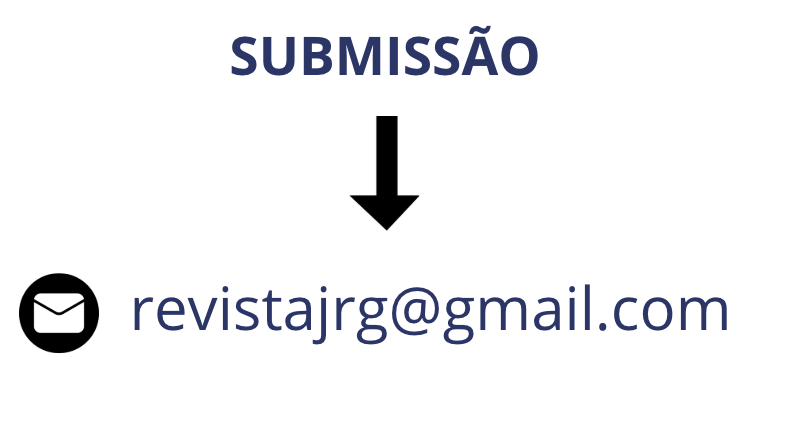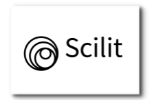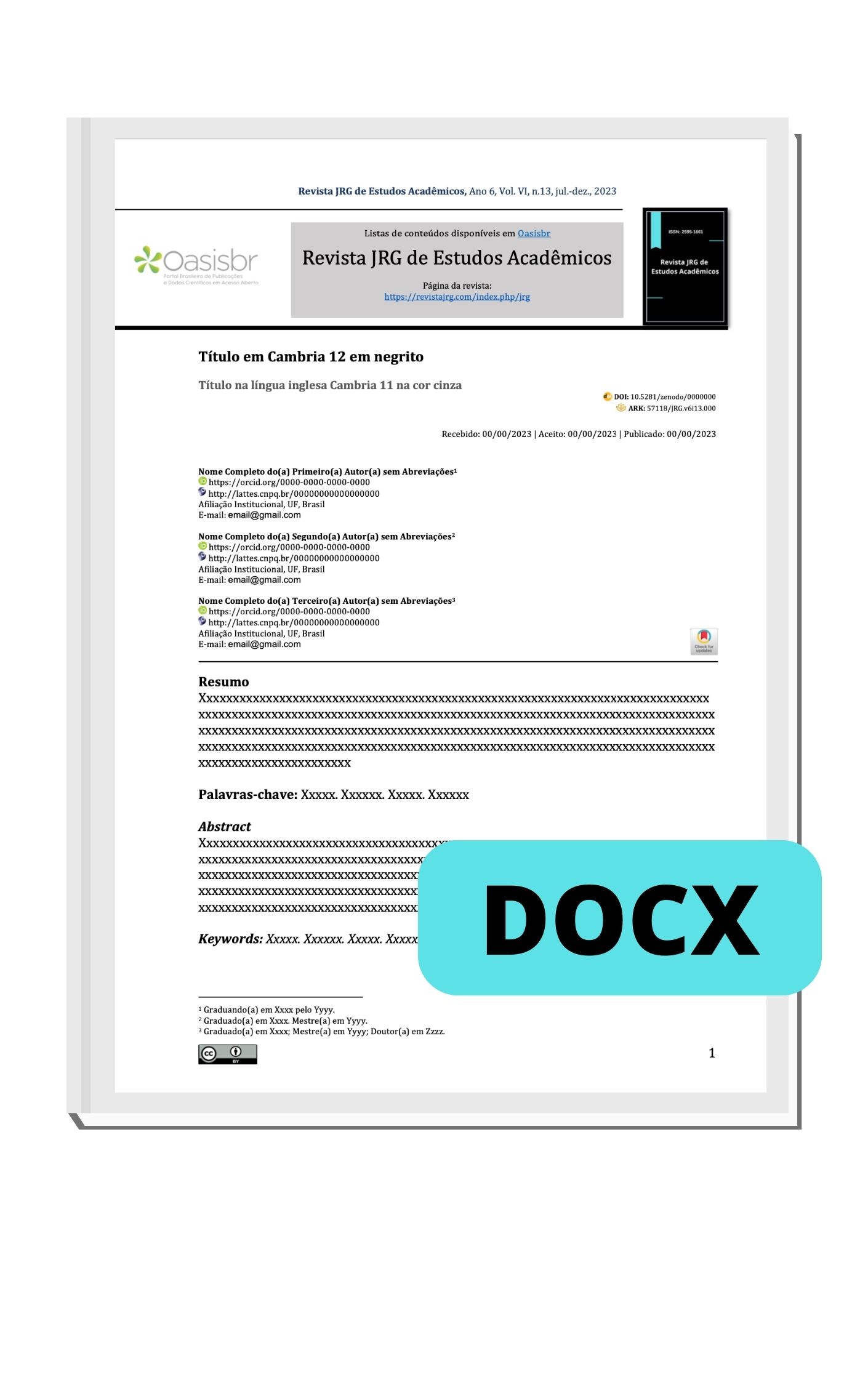Uso de inteligência artificial no planejamento ortodôntico: aplicações atuais e tendências futuras
DOI:
https://doi.org/10.55892/jrg.v8i18.2189Palabras clave:
Inteligência Artificial, Ortodontia, Planejamento Ortodôntico, Diagnóstico Odontológico, Tecnologias DigitaisResumen
O presente estudo tem como objetivo analisar as aplicações atuais e as perspectivas futuras da Inteligência Artificial (IA) no planejamento ortodôntico, com ênfase em seus impactos sobre a prática clínica e os processos diagnósticos. A partir de uma revisão bibliográfica sistemática de estudos recentes, identificou-se que a IA tem desempenhado um papel relevante na automatização de tarefas, como a detecção de pontos cefalométricos, a predição de movimentações dentárias, o delineamento de tratamentos personalizados e a redução de erros humanos. Tecnologias como redes neurais convolucionais (CNNs), algoritmos de aprendizado de máquina e modelos preditivos têm sido amplamente empregadas com elevados índices de acurácia e confiabilidade. Para além dos benefícios técnicos, a IA contribui para a otimização do tempo clínico, o aumento da eficiência operacional e a melhoria na experiência do paciente. Por outro lado, o estudo também discute desafios éticos, legais e operacionais, tais como a proteção de dados, os vieses algorítmicos e a ausência de regulamentações específicas. Conclui-se que, embora a IA já esteja promovendo mudanças significativas na ortodontia, sua adoção plena requer investimentos contínuos em pesquisa, capacitação profissional e desenvolvimento de marcos regulatórios adequados. Este trabalho oferece subsídios para que ortodontistas e pesquisadores compreendam as potencialidades da IA e promovam sua integração de forma segura, ética e eficaz à prática clínica.
Descargas
Citas
ABDALLA-ASLAN, R. et al. An artificial intelligence system using machine learning for automatic detection and classification of dental restorations in panoramic radiography. Oral Surgery, Oral Medicine, Oral Pathology, Oral Radiology, v. 130, n. 5, p. 593–602, 2020. Disponível em: https://pubmed.ncbi.nlm.nih.gov/32646672/. Acesso em: 27 maio 2025.
AGARWAL, M.; JAIN, N.; KUMAR, M.; AGRAWAL, H. Face recognition using eigen faces and artificial neural network. International Journal of Computer Theory and Engineering, v. 2, n. 4, p. 624-629, 2010. DOI: 10.7763/IJCTE.2010.V2.213. Acesso em: 27 maio 2025.
AHMED, N. et al. Artificial intelligence techniques: Analysis, application, and outcome in dentistry-A systematic review. BioMed Research International, 2021, p. 1–15, 2021. Disponível em: https://pubmed.ncbi.nlm.nih.gov/34258283/. Acesso em: 27 maio 2025.
ALBAWI, S.; MOHAMMED, T. A.; AL-ZAWI, S. Understanding of a convolutional neural network. In: International Conference on Engineering and Technology, 2017, p. 1-6. DOI: 10.1109/icengtechnol.2017.8308186. Acesso em: 27 maio 2025.
ALOWAIS, S. A. et al. Revolutionizing healthcare: The role of artificial intelligence in clinical practice. BMC Medical Education, v. 23, p. 689, 2023. DOI: 10.1186/s12909-023-04698-z. Acesso em: 27 maio 2025.
AL-RAWI, N. et al. The effectiveness of artificial intelligence in detection of oral cancer. International Dental Journal, 2022. Acesso em: 27 maio 2025.
BANKMAN, I. Handbook of medical image processing and analysis. 2. ed. Burlington, MA: Academic Press, 2008.
BECKER, C.; BECKER, A. M.; PFEIFFER, J. Health-related quality of life in patients with nasal prosthesis. Journal of Cranio-Maxillofacial Surgery, v. 44, n. 1, p. 75-79, 2016. DOI: 10.1016/j.jcms.2015.10.028. Acesso em: 27 maio 2025.
BROPHY, J. E. Research on the self-fulfilling prophecy and teacher expectation. Oral Biology, v. 27, p. 27-28, 2005.
CARDOSO, M. D. et al. Importância da reabilitação protética nasal. Revista de Cirurgia e Traumatologia Buco-Maxilo-Facial, v. 6, n. 1, p. 43-46, 2006.
CARVALHO, J. C. M. et al. Reabilitação protética craniomaxilofacial. São Paulo: Editora Santos, 2013.
CHANG, H. J. et al. Deep learning hybrid method to automatically diagnose periodontal bone loss and stage periodontitis. Scientific Reports, v. 10, p. 7531, 2020. DOI: 10.1038/s41598-020-64509-z. Acesso em: 27 maio 2025.
CHEN, X. et al. Detection of proximal caries lesions on bitewing radiographs using deep learning method. Caries Research, v. 56, n. 5-6, p. 455–463, 2022. Disponível em: https://pubmed.ncbi.nlm.nih.gov/36215971/. Acesso em: 27 maio 2025.
CHOLLET, F. Deep Learning with Python. Shelter Island: Manning, 2017.
DING, H. et al. Artificial intelligence in dentistry—A review. Frontiers in Dental Medicine, v. 4, 2023. Disponível em: https://www.frontiersin.org/articles/10.3389/fdmed.2023.1085251/full. Acesso em: 27 maio 2025.
DINIZ DE LIMA, E. et al. Artificial intelligence and infrared thermography as auxiliary tools in the diagnosis of temporomandibular disorder. Dentomaxillofacial Radiology, 2021. DOI: 10.1259/dmfr.20210318. Acesso em: 27 maio 2025.
FANG, X. et al. Machine-learning–based detection of degenerative temporomandibular joint diseases using lateral cephalograms. American Journal of Orthodontics and Dentofacial Orthopedics, v. 163, n. 2, p. 260-271.e5, 2023. DOI: 10.1016/j.ajodo.2022.10.015. Acesso em: 27 maio 2025.
FAN, F. et al. Automatic human identification from panoramic dental radiographs using the convolutional neural network. Forensic Science International, v. 314, p. 110416, 2020. DOI: 10.1016/j.forsciint.2020.110416. Acesso em: 27 maio 2025.
FAROOK, T. H. et al. Machine Learning and Intelligent Diagnostics in Dental and Orofacial Pain Management: A Systematic Review. Pain Research and Management, 2021, p. 1–9, 2021. DOI: 10.1155/2021/6659133. Acesso em: 27 maio 2025.
GOBBO, S. F. R. et al. Estimativa da idade dental pelo método de Nicodemo em uma população da região sudeste do Brasil. Revista Criminalistica E Medicina Legal, v. 6, n. 1, p. 10–18, 2021. DOI: 10.51147/rcml044.2021. Acesso em: 27 maio 2025.
HEO, J. et al. Modelo de aprendizagem profunda para diagnóstico de câncer de língua usando imagens endoscópicas. Scientific Reports, v. 12, p. 6281, 2022.
HEINRICH, A. Accelerating computer vision-based human identification through the integration of deep learning-based age estimation from 2 to 89 years. Scientific Reports, v. 14, n. 1, 2024. DOI: 10.1038/s41598-024-54877-1. Acesso em: 27 maio 2025.
ITO, S. et al. Automated segmentation of articular disc of the temporomandibular joint on magnetic resonance images using deep learning. Scientific Reports, v. 12, n. 1, 2022. DOI: 10.1038/s41598-021-04354-w. Acesso em: 27 maio 2025.
JAYA SUJI, R.; RAJAGOPALAN, S. P. Uma classificação automática de câncer oral usando técnicas de mineração de dados. International Journal of Advanced Research in Computer Engineering & Technology, v. 2, n. 10, 2013.
KIM, Y. H. et al. A fully automated method of human identification based on dental panoramic radiographs using a convolutional neural network. Dentomaxillofacial Radiology, v. 51, 2021. DOI: 10.1259/dmfr.20210383. Acesso em: 27 maio 2025.
KROIS, J. et al. Deep learning for the radiographic detection of periodontal bone loss. Scientific Reports, v. 9, p. 8495, 2019. DOI: 10.1038/s41598-019-44839-3. Acesso em: 27 maio 2025.
KUKUCKA, E. The transformative power of AI in dentistry. International Magazine of Artificial Intelligence in Dentistry, v. 1, p. 06-09, 2024. Disponível em: https://us.dental-tribune.com/e-paper/ce-magazines/ai-dentistry-international/ai-dentistry-international-magazine-of-artificial-intelligence-in-dentistry-preview/. Acesso em: 27 maio 2025.
KÜHNISCH, J. et al. Caries detection on intraoral images using artificial intelligence. Journal of Dental Research, v. 101, n. 2, p. 158–165, 2022. Disponível em: https://pubmed.ncbi.nlm.nih.gov/34416824/. Acesso em: 27 maio 2025.
LEE, J. H. et al. Diagnosis and prediction of periodontally compromised teeth using a deep learning-based convolutional neural network algorithm. Journal of Periodontal & Implant Science, v. 48, n. 2, p. 114-123, 2018. DOI: 10.5051/jpis.2018.48.2.114. Acesso em: 27 maio 2025.
LIU, C. M.; LIN, W. C.; LEE, S. Y. Evaluation of the efficiency, trueness, and clinical application of novel artificial intelligence design for dental crown prostheses. Dental Materials, v. 40, n. 1, p. 19–27, 2024. Disponível em: https://pubmed.ncbi.nlm.nih.gov/37858418/. Acesso em: 27 maio 2025.
MCARTHY, J.; MINSKY, M.; ROCHESTER, N.; SHANNON, C. E. A proposal for the Dartmouth summer research project on artificial intelligence. AI Magazine, v. 27, n. 4, p. 12–14, 2006. Disponível em: https://dl.acm.org/doi/10.5555/1626155.1626159. Acesso em: 27 maio 2025.
MEHTA, N. et al. Application of artificial intelligence in prosthodontics: Current status and future perspectives. Journal of Prosthodontic Research, 2023. DOI: 10.2186/jpr.2023-013. Acesso em: 27 maio 2025.
MIRGHANI, I. A. Artificial intelligence in dentistry: Past, present, and future. International Dental Journal, v. 72, n. 3, p. 261–265, 2022. DOI: 10.1111/idj.12801. Acesso em: 27 maio 2025.
NAYLOR, A. F.; SCHOEN, P.; CARRIÈRE, S. Using artificial intelligence to detect oral cancer. Oral Oncology, v. 135, 2023. DOI: 10.1016/j.oraloncology.2023.106400. Acesso em: 27 maio 2025.
NIELSEN, M. A. Neural networks and deep learning. Determination Press, 2015.
NISHIMURA, T. et al. Automated diagnosis of dental caries on panoramic radiographs using a convolutional neural network. Scientific Reports, v. 12, n. 1, p. 1-8, 2022. DOI: 10.1038/s41598-022-06189-0. Acesso em: 27 maio 2025.
PILAN, R. A. et al. Inteligência artificial na odontologia: Revisão da literatura. Revista da Faculdade de Odontologia de Lins, v. 30, n. 1, p. 60–65, 2020.
RAPOSO, M. et al. Uso da inteligência artificial para auxiliar no diagnóstico de câncer bucal: Uma revisão sistemática. Revista de Odontologia da UNESP, v. 49, 2020.
SHAH, N. et al. Artificial intelligence in orthodontics: A review. Seminars in Orthodontics, v. 26, n. 2, p. 134-141, 2020. DOI: 10.1053/j.sodo.2020.01.002. Acesso em: 27 maio 2025.
SINGH, S. K. et al. Application of artificial intelligence in dentistry: A comprehensive review. Journal of Pharmacy & Bioallied Sciences, v. 12, Suppl 2, p. S133-S138, 2020. DOI: 10.4103/jpbs.JPBS_96_20. Acesso em: 27 maio 2025.
YAMADA, H. et al. Use of artificial intelligence for dental implantology: Current status and future perspectives. International Journal of Implant Dentistry, v. 8, n. 1, p. 17, 2022. DOI: 10.1186/s40729-022-00400-7. Acesso em: 27 maio 2025.
ZHANG, K. et al. Artificial intelligence in dentistry: Current applications and future perspectives. Quintessence International, v. 53, n. 6, p. 436-445, 2022.
AI-Dentify: deep learning for proximal caries detection on bitewing x-ray – HUNT4 Oral Health Study. BMC Oral Health, v. 24, n. 1, p. 344, 2024.
Automatic detection of periodontal compromised teeth in digital panoramic radiographs using faster R-CNN. Computers in Biology and Medicine, v. 114, p. 103421, 2020.
Automatic detection of cephalometric landmarks using a fully convolutional neural network. Journal of Orofacial Orthopedics, v. 79, n. 6, p. 409–418, 2018.
Deep learning-based automated cephalometric landmark detection on lateral cephalograms. Orthodontics & Craniofacial Research, v. 26, n. 1, p. 1–8, 2023.











































